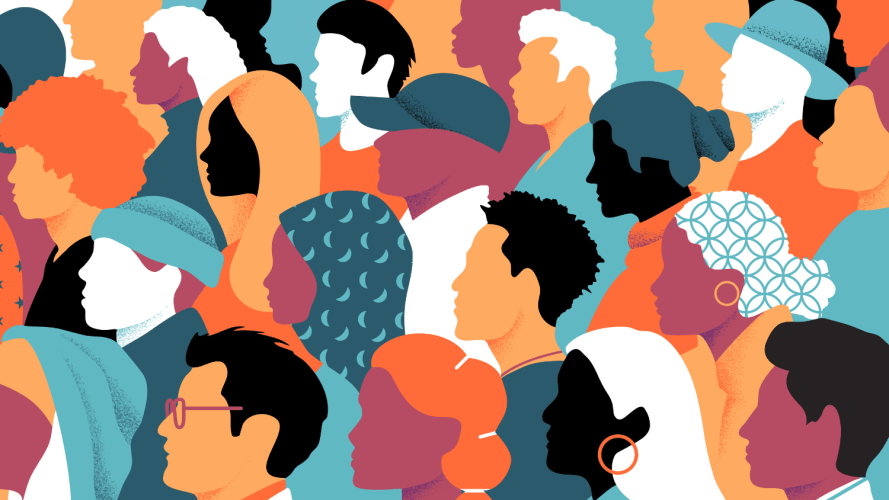Designing today’s artificial intelligence (AI) interfaces requires a deep knowledge of human-computer interaction. People working at this intersection are curious to understand both sides of the equation. Computers need prompts, grounding, and clean data. There are also universal truths about what it means to be human that we have to consider in how we build products.
“Now that AI is here, what changes and what remains the same?” asked JoEllen Kames. As Salesforce Director of User Experience Design, she leans on both her experience designing for emerging technology and her master’s degree (MDes) in human-centered systems design. She encourages anyone designing with AI to think critically about the human condition.
Here are five insights for anyone studying human-computer interaction:
- Busy designs overwork human brains.
- People remember feelings even when they forget details.
- When people are unsure how to behave, they refer to other people’s behavior to guide their own.
- It’s easier to maintain the status quo than change behavior.
- People change slowly.
1. Busy designs overwork human brains.
There’s a common refrain in UX: Don’t make me think. It’s a reference to the best-selling book by Steve Krug: Don’t Make Me Think: A Common Sense Approach to Web Usability. Now that prompts are a new way to navigate digital products, Kames suggests a second book: Don’t Make Me Ask. Infinite choices overwork the human brain.
Hick’s law explains that the more options there are, the longer a human takes to decide. The open prompt field offers too many choices.

Instead, a few prebuilt prompts can speed up the user experience and the human-computer interaction. “Take the labor out. Design a user experience that shows the value up front – even if it’s a glimmer of the value,” said Kames. Today, her work focuses on how AI can help everyone access, easily understand, and act on data. As an instructor, she extends her learnings to graduate students at both Northwestern University and Illinois Institute of Technology (IIT). Back to top
2. People remember feelings even when they forget details.
Emotions can leave a lasting impression. While the amygdala and hippocampus also support memory function, “emotion does not always enhance memory.” So designs need to create a feeling. Liz Trudeau, Salesforce VP of Cross-Cloud UX, focuses on giving users a feeling of confidence.
Confidence is memorable. It’s a mix of satisfaction, pride, and ability. A user might feel it when they close a sales opportunity or execute a major campaign. “Humans are on a constant search for confidence,” said Trudeau. Her work centers on AI-powered products, from Agentforce to the future of work as AI matures.
She acknowledges that getting to that moment of confidence requires overcoming some uncertainty about where to begin. Back to top
3. When people are unsure how to behave, they refer to other people’s behavior to guide their own.
This is also known as social proof, a theory that gained traction in the mid-1980s. In situations where expectations are unclear, people assume that others know more than they do. For example: When someone wants to find a good restaurant nearby, they look at reviews on Google.
“Right now, people across industries are afraid of change and looking to each other,” said Yvonne Gando, Salesforce UX Architect. She recognizes that practical examples help demystify the benefits of AI.
An effective way to harness social proof is to weave it into the flow of work. An AI-powered sales dashboard or customer support system can guide reps to prioritize actions that most of their colleagues focus on.
“Designers can show how it leads to more efficiencies, whether that’s opportunities closed or reduced response times,” she said. “There’s a connotation that AI is a mystery box.” Back to top
The Foundations of Human-Computer Interaction
4. It’s easier to maintain the status quo than change behavior.
People might resist learning about how AI and human-computer interaction can benefit their businesses. This way, they can stick to their old, comforting ways.
Status quo bias was coined in the 1980s and outlines the preference for things to stay the way they are. It takes less mental energy to default to the norm.
Given energy is required to make any change, the potential gain must be great to act. Knowing this, designers can showcase the gain in clear and compelling ways. Back to top
5. People change slowly.
Humans are more comfortable with evolution than reinvention. Kames encourages designers to meet users where they are. Adapt to their current patterns. “Some things will change and a lot won’t,” she said. “Mostly, innovation aims to make life easier for humans.”
Her designs push the envelope to what users expect, but no further. She recommends work that’s maximally advanced but still acceptable to common standards. Back to top
Improving human-computer interaction
AI and emerging technologies are outpacing human ability to absorb it all. Remembering the human element in the human-computer interaction helps us shift the focus back to what users really need. Consider the impact of simplification, emotion, social proof, default settings, and evolution.
These five insights can help you improve your designs now and in the future.
Back to top





























